so, I am a beginner in electronics...hoping to find some help... here I've found a circuit that I want to use from LM 3915 datasheet..... but the problem is I don't have 0.2 and 0.47 Capacitors... capacitors that I have are 1UF 2.2UF 3.3UF
4.7UF 10UF 22UF
33UF 47UF 100UF
220U... if I want to change c1 and c2 with capacitors that I have, which resistors should I change the value so it would reach max capability of this circuit? and I was hoping You guys can recommend best value of c1 and c2 for me based on capacitors on my possession... Thank You for helping me... I want to make 4 channel vu meter... 
- 33
- 7
1 Answers
With the capacitors available, you can produce a value of \$C_1 = 0.2 \, \mu F \$ by connecting 5 capacitors of \$ 1 \, \mu F \$ in series. If they have a polarity then it's advisable to alternate those. For \$C_2\$ you can put 2 of \$ 1 \, \mu F \$ in series. Again, if they have a polarity, connected their negative terminals together.
Anyway, for \$ C_1 \$ it won't hurt to take just 1 piece of \$ 1 \, \mu F \$ instead of \$ 0.2 \, \mu F \$.
I would stick to the value of \$ C_2 \$ however, as it forms a low-pass filter in combination with \$ R_6 \$. If on the other hand you insist in using only 1 capacitor, you could change \$ C_2 \$ into \$ 1 \, \mu F \$ while halving \$ R_6 \$ into \$ 500 \, \Omega \$ in order to preserve the value of the existing time constant.
- 271
- 1
- 4
-
Thank You Joe... I've been trying to find answers everywhere day and night, thank you for providing me with such a knowledge of yours... I may need one more question joe, If I cascaded RC high pass and Low pass filter and put it on the output of the circuit above to make 4 channel vu meter, would there any other changes in the circuit above? thank you again Joe, I'm a dumb guy trying to learn electronics man... Hope You understand... – Nelson Nov 02 '18 at 15:40
-
If you're happy with my answer than please vote it up, so eventually I can get enough 'reputation' to comment to others' questions and answers also. Thanks. :) Further I'm not sure what you mean by '4 channel'. Do you want to know the peaks of 4 different outputs, or do you mean to measure the peaks of different frequency ranges in the signal? – joe electro Nov 02 '18 at 15:43
-
how do I vote it? I just registered to this site yesterday...? – Nelson Nov 02 '18 at 15:45
-
For voting, you might just click on the UP arrow above the '0' beside my answer, if I'm right. – joe electro Nov 02 '18 at 15:47
-
ok... sorry, I just know about this from you... oh my god I only Have 220 K resistor... would this effect much on vu meter? thank You again Joe... – Nelson Nov 02 '18 at 15:49
-
I only Have 220 K resistor... would this effect much on vu meter if I change 200K to 220 K? – Nelson Nov 02 '18 at 15:52
-
The second op-amp, the one with pins 5-7, rectifies the negative cycle, while during that time the output of the first op-amp is zero. That means no current goes through \$R_3\$ and \$R_4\$ and \$R_5\$ are independent of \$R_3\$. Now \$R_4\$ and \$R_5\$ determine the amplification (1) of the 2nd op-amp, and as long as their ratio stays the same some minor modifications, like going from 200 k to 220 k, won't have much effect on the behavior of the circuit. – joe electro Nov 02 '18 at 16:10
-
Thank You Joe... hey does this site provide chatting? can I chat with you? I really want to make my 4 ch vu meter man... thank you... – Nelson Nov 02 '18 at 17:06
-
I advise you to improve your question by explaining a bit more clearly what you are trying to get out of this. Other people might chime in an come up with a better solution than I can think of. – joe electro Nov 02 '18 at 17:18